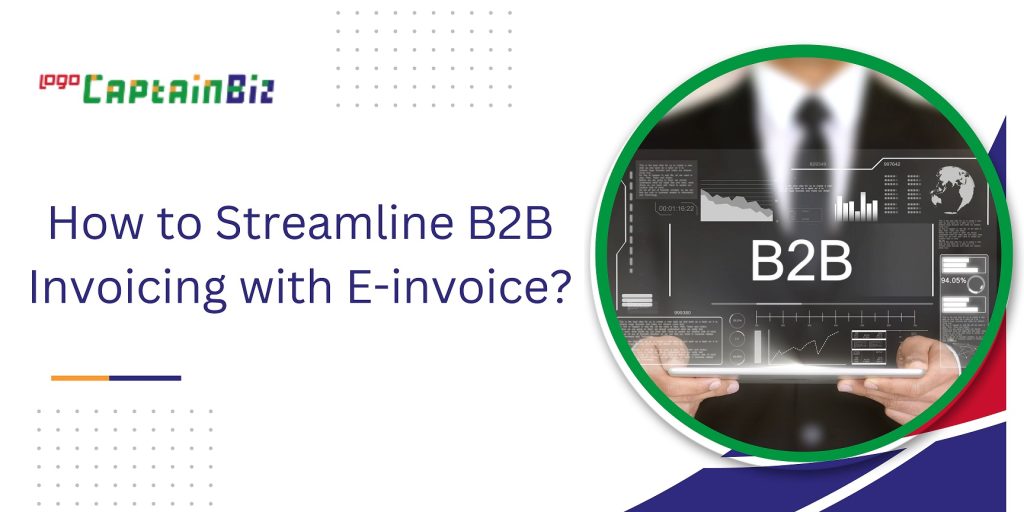Mandates for electronic invoicing are becoming more common. At some point, many firms will have to send and receive electronic bills; for those organizations that operate globally, that moment is now.
Global usage of e-invoicing has been rising rapidly. According to the IMARC Report, the market would develop at a compound annual growth rate (CAGR) of 20.26% from 2023 to 2028, reaching US$ 35.9 billion.
What is E-Invoicing?
An electronic invoice, often called an E-invoice, is a digital invoice transferred digitally rather than on paper between the customer and supplier. This approach minimizes the need for human data entry by automating the billing process. A portion of the accounts payable process may be streamlined and automated with the help of this electronic document exchange between the buyer and supplier.
What are the Types of E-Invoicing?
There are two primary categories of E-invoices: structured and unstructured. These categories deal with the structure and arrangement of the invoice information.
Structured E-invoices
Standardized electronic papers with a predetermined format and layout are called structured E-invoices. The information is easily extracted and processed by automated systems because they are usually created and processed in a structured data format.
Standardized fields and data components for specific invoice details, such as the invoice number, date, vendor details, client details, line items, quantities, pricing, and more, are essential features of structured electronic invoicing.
Unstructured E-invoices
Conversely, unstructured E-invoices are sent as free-form text or image files and do not follow a set pattern. They might be in Word, PDF, scanned photo, or plain text, among other file formats.
Unstructured electronic invoices need a standard, machine-readable presentation of the information, which might complicate automated data extraction and processing.
Why should Companies use E-invoices for B2B Transactions?
Companies should use e-invoicing to profit from automated AP/AR procedures as part of a larger digital transformation strategy, to stay compliant and carry on trading in nations where e-invoicing is required, and to guarantee compliance in nations where they intend to start trading.
Is e-invoicing necessary at all?
More and more nations are mandating E-invoices for B2B Transactions. Process automation can result in significant cost savings and frequently provide tax authorities with comprehensive knowledge of corporate transactions.
What are the Benefits of Using E-invoice for B2B Transactions?
E-invoice for B2B transactions benefits organizations significantly, from enhanced relationships with suppliers and consumers to cost savings and better efficiency. You can save time and invoicing expenses by optimizing your process, freeing up resources for other company functions.
The Power of E-Invoice in B2C Transactions
Increased Efficiency
The capacity of electronic invoicing to significantly improve the process’s efficiency is one of its primary benefits. Introducing electronic invoicing is a game-changing chance for your company to optimize billing processes.
E-invoicing transforms your invoicing workflow and expedites your financial processes by automating the formerly laborious manual tasks of invoice production, distribution, and payment.
Enhanced Security
The transmission of E-invoices is achieved using highly secure encrypted emails or specialized cloud services and channels such as CaptainBiz, which substantially mitigates the likelihood of fraudulent actions or unauthorized access.
When it comes to the buyer, electronic invoicing dramatically reduces the possibility of obtaining fake invoices. Encouraging businesses to verify their membership in the network through Know Your Customer (KYC) protocols allows for increased security when invoices are transmitted through a secure network or gateway.
Better Account Reconciliation
In the past, suppliers had to verify that the books were accurate by comparing invoices and bank statements. Clarifying the specifics may become more manageable if customers combine invoice payments or make deductions, for example, because of defective goods.
Customers can use e-invoicing to transmit invoices for account reconciliation and payments.
Faster Payment and Improved Cash Flow
Usually, the payment term begins when the invoice is received. E-invoicing sends invoices right away, which shortens payment cycles and speeds up the payment process significantly. Your company’s cash flow may improve as a result of this.
By using digital payments and more touchless straight-through processing, you can even receive payment more quickly. This implies that instead of printing, scanning, or mailing their invoices, your clients can pay them online.
Greater Customer Satisfaction
For a more efficient and customer-like purchasing experience, electronic invoicing enables consumers to track the status of their invoices in real-time. Buyers can check if their invoice is being handled effectively by accessing invoice information.
Stronger client ties, better customer retention, and an excellent reputation can all result from increased customer satisfaction.
Digital Archive and Storage
E-invoicing provides a systematic approach to storage and archiving. Numerous European nations have already mandated, or will shortly compel, the cloud-based archiving of invoices for variable periods.
This E-invoice guarantees easy searchability and retrieval of invoices, especially during audits or compliance inspections. Because E-invoices are digital, vital financial records are protected, giving organizations greater data integrity and peace of mind.
Reduction of Invoice Processing Costs
Paper invoices are expensive to produce, mail, labor, and supply. The cost of invoicing can be significantly decreased by automating the procedure and removing anything physical. “Compared to conventional paper invoice processing, automated e-invoicing will result in cost savings of 60-80% in most cases,” according to the most recent Billentis Report.
Accounting teams can save time and concentrate on more essential duties by reducing or eliminating manual invoice processing (double input, issuing bills, reminders for delinquent invoices, reconciliation with or without purchase orders, errors, exception management, etc.).
How to Streamline B2B Invoicing with E-invoice?

E-invoicing can streamline B2B invoicing and improve the process by reducing errors, increasing efficiency, and improving overall quality. The processes and examples of using E-invoice to facilitate B2B invoicing streamlining are as follows:
Standardize Your E-invoice Outline
Standardizing your E-invoice layout is essential for clarity and consistency. A standardized E-invoice should include the following key components:
- Sender’s and recipient’s details.
- Invoice number and date.
- A detailed description of services provided.
- Unit prices, quantities, and total amounts.
- Taxes, discounts, and shipping costs.
- Payment terms and methods.
- Contact information for queries.
- By adhering to a consistent format, you not only facilitate understanding but also improve the chances of quick and accurate payment processing.
Use an E-Invoicing Software Tool
Utilizing specialized e-invoicing software is a game-changer for businesses. These tools automate the invoicing process, reducing the risk of human errors and saving time. They can also handle tasks such as tax calculations, currency conversions, and invoice tracking.
Additionally, e-invoicing software such as Captain Biz often provides various templates, making it easier to standardize your invoices, and some platforms offer integration with accounting and financial software for seamless data transfer.
E-invoice in the Service Industry: Automation and Digital Transformation
Create an E-Invoicing Schedule
A regular invoicing schedule ensures consistency and predictability for your Business and clients. Whether you send invoices on a weekly, bi-weekly, or monthly basis, it’s essential to stick to the schedule.
Consistency helps clients plan their payments and avoids surprises. Moreover, e-invoicing software can automate this process, saving you time and ensuring invoices are dispatched promptly.
Allow Multiple Payment Options
Diversifying payment options is customer-friendly and can expedite payments. Offer various methods, including credit card payments, bank transfers, online payment gateways, and traditional checks.
Ensure your invoicing system supports these methods and provides clear instructions for each option. Flexibility in payment methods accommodates clients’ preferences and can help avoid payment delays.
Create a Customer Portal
A customer portal is a valuable addition to your e-invoicing process. This secure online platform lets your clients access their invoices, make payments, and track their transaction history.
A customer portal enhances transparency, reduces inquiries, and empowers clients to manage their accounts more efficiently. It also demonstrates a commitment to providing top-notch customer service.
Maintain Detailed E-invoice Records
Record-keeping is crucial for audit compliance and resolving disputes. Store all E-invoices securely and systematically. Most e-invoicing software platforms include built-in record-keeping features, but you should also consider creating backup systems to ensure data security.
Detailed records should consist of copies of invoices, payment receipts, communication-related invoices, and any necessary documentation for taxes and accounting purposes.
Suggested Read: How E-Invoicing is Shaping the Future of Tax Compliance in India
Choose the Right e-invoicing solution for your Business.
For small Indian enterprises, CaptainBiz provides a comprehensive accounting, inventory, and online billing solution. You can download sales records (compatible with Tally) or GST reports for monthly tax filing, send invoices via email or WhatsApp, track inventory promptly, and keep track of payments owed to you. Whenever you require assistance, our committed Customer Support team is here to help.
The Goods & Services Tax Network (GSTN) of India recommends CaptainBiz as a cost-effective and user-friendly option for businesses that are either GST or non-GST registered.
Conclusion
The secret to simplifying your business processes is using e-invoicing for business-to-business interactions. It’s time to head for increased financial management, decreased errors, and increased efficiency.
You’ll steer clear of rougher, less profitable waters on this voyage with CaptainBiz as your dependable guide. Take advantage of the opportunity to join the E-invoice revolution and let CaptainBiz lead your company to prosperity!
FAQs
-
What’s an E-invoice?
An electronic invoice, often called an E-invoice, is a digital invoice transferred digitally rather than on paper between the customer and supplier. This approach minimizes the need for human data entry by automating the billing process.
-
How does e-invoicing work?
E-invoicing software generates electronic invoices without requiring any data entry from humans. This implies that to have the bill paid more quickly, e-invoicing solutions can read them automatically instead of by a human.
-
Why is e-invoicing better than traditional methods of invoicing?
Electronic invoicing is a favored option for companies to optimize their financial operations and strengthen their sustainability initiatives since it provides a more effective, economical, and ecologically friendly approach to managing invoicing activities.
-
How can I implement electronic invoicing in my Business?
To implement electronic invoicing in your Business, select an e-invoicing software such as Captain Biz, set up your invoicing process, and ensure compliance with relevant regulations.
-
Is e-invoicing mandatory for B2B?
E-invoicing is governed by the Goods and Services Tax (GST) law in India. It is legally mandated for businesses that are a part of the GST system to use electronic invoicing for all business-to-business transactions.
-
How do I create an E-invoice for B2B sales?
Use invoicing software or platforms complying with your nation’s e-invoicing rules, enter pertinent transaction details, and send the invoice electronically to your business customer to create an E-invoice for B2B sales.
-
Is an E-invoice for B2B or B2C?
An E-invoice can be used for B2B (business-to-business) and B2C (business-to-consumer) transactions, but it’s more commonly associated with B2B transactions.
-
Why is an E-invoice mandatory?
E-invoices are mandatory to improve tax compliance, reduce fraud, and streamline the invoicing process for greater efficiency.
-
How many types of E-invoice are there?
There are two main types of E-invoices: structured and unstructured.
-
Which software is best for E-invoices?
Captain Biz is best for an E-invoice.

